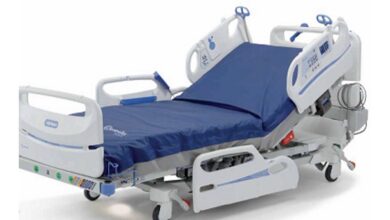Ways to Simplify Admin and Processes in Hospitals

A hospital — public or private — is a busy and hectic place. It doesn’t take long for even the best-run hospitals to descend into chaos during difficult times. The recent global pandemic has shown that to be the case. It’s because of this sad reality that individual hospitals and public healthcare systems should be constantly working on ways to make various administrative and other processes in their establishments more efficient.
In doing so, hospitals can ensure that the chances of that fall into more chaotic circumstances are minimised. Some of the top areas being targeted by hospitals include (but are not limited to) the following things:
1. Reporting
Modern hospitals are increasingly looking into how implementing a more effective allied healthcare reporting tool can boost communication between various departments. The term “allied healthcare” refers to those medical professionals who work in hospitals but who are not regular doctors or nurses. They perform essential functions like operating the MRI machines, running pathology labs, X-ray machines, and much more.
The results that they feed into the system forms the critical foundation that informs doctors and nurses on what steps to take next to advance healthcare for patients in their charge. Making that reporting clearer, faster, and easier to share is a big part of speeding up hospital processes.
2. Enforcing Feedback
Hospitals and other healthcare establishments have become quite adept at gathering feedback and suggestions from both staff and patients. The problem is that too few practising doctors, nurses, and administrators put those suggestions into action.
If hospitals want to see better results, and higher rates of patient satisfaction with care, then there has to be some system of enforcing constructive feedback, possibly through incentive or penalty programs, but first and foremost through better communication to the people for whom the feedback is relevant.
3. Let Researchers Research
Some establishments also serve as important teaching hospitals where up-and-coming medical talent is trained on the job. These teaching centres are frequently home to doctors and other professionals who are also highly adept at medical research. One problem teaching hospitals have is that they don’t gain the full advantage of this research expertise because they overburden doctors with other work, leaving little or no room for additional research.
The research they’re missing could find key solutions to existing problems in medical processes and procedures that if updated could result in many additional lives being saved. Therefore, allowing researchers the time, energy and space to conduct that research is of critical importance.
4. Cutting Down on Red Tape
Hospital bureaucracy is a serious problem in many countries, even in the largely private US healthcare system where studies have shown the cost of excessive red tape to reach up close to US$500 billion. Hospital administrators like to talk about “waging war on waste” and cutting red tape, but how meaningfully do they really manage it?
Bureaucracy gets a bad rap, but some of it does help maintain standards, ensure procedures are followed thoroughly, and thus saves lives. It’s important that hospitals therefore consult with real medical professionals and other experts to ensure that procedures and bureaucracy they cut will provide a net benefit to the overall running of the hospital.
5. Automation and Staff Training
Finally, when you look at countries like China, what you see is a country desperately trying to make its limited medical infrastructure work better for its billion-strong (and ageing) population. One way they’re doing that is by increasing the level of automation and technology integration to speed up patient admission, improve interdepartmental communication and reporting, and make it easier for patients to collect test and lab results without having to wait in line for a staff member to get it for them.





